ChangeThis
The original idea behind ChangeThis came from Seth Godin, and was built in the summer of 2004 by Amit Gupta, Catherine Hickey, Noah Weiss, Phoebe Espiritu, and Michelle Sriwongtong. In the summer of 2005, ChangeThis was turned over to 800-CEO-READ. In addition to selling and writing about books, they kept ChangeThis up and running as a standalone website for 14 years. In 2019, 800-CEO-READ became Porchlight, and we pulled ChangeThis together with the rest of our editorial content under the website you see now. We remain committed to the high-design quality and independent spirit of the original team that brought ChangeThis into the world.
-
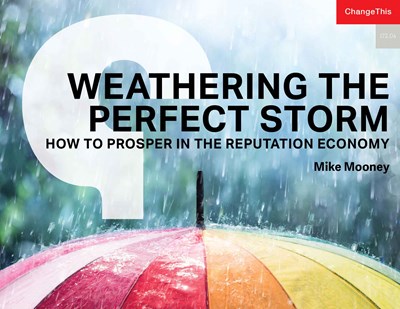
Blog / ChangeThis
Weathering the Perfect Storm: How to Prosper in the Reputation Economy
By Mike Mooney
"It is vital to understand that we are living in a perfect storm that is making our reputations more fragile than at any other time in human history! This perfect storm consists of the values-gap in behavior among leaders that litter the headlines, the fact that we are all now citizen journalists carrying smartphones to capture events, all colliding with the hyper-connected and shareable world that social media channels have created. It's a new day in the court of public opinion and oftentimes these moments go viral and a bad situation gets worse in a hurry. It doesn't just impact high-profile leaders, executives, celebrities, and professional athletes. It's true for us and can be just as devastating as individuals as it is for companies."
Categories: changethis
-
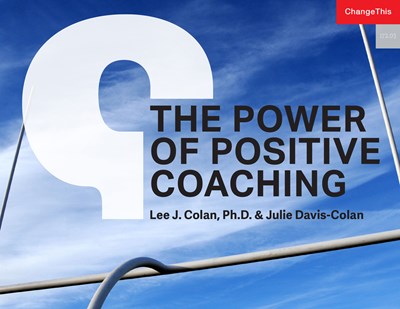
Blog / ChangeThis
The Power of Positive Coaching
By Lee J. Colan PhD, Julie Davis-Colan
"It wasn't too long ago that having a business coach was like having a scarlet letter on your professional suit. Back then, most coaching was remedial—there was a problem that needed to be fixed. Today, having a coach has been elevated in status. Business leaders have realized what professional athletes have always known—having a coach produces better results. That's a significant and necessary paradigm shift. Instead of symbolizing a problem, having a coach symbolizes a leader's willingness to develop and grow as a person and a leader."
Categories: changethis
-

Blog / ChangeThis
Live Big: The Entrepreneur's Guide to Passion, Practicality, and Purpose
By Ajit Nawalkha
"As an entrepreneur, you need to know that your business isn't an entity. It's an experience. It's unfolding at every moment. Every moment is vital. Critical. The only way to handle the chaos and the crazy beauty of it all is this: know that growing your business is actually about growing yourself. It's about staying sane, centered, and focused. [...] All you have is this moment, this experience. Make it an interesting one. Make it fun. Make it worth sharing. When you let love in to everything you do, everything you do seems to be created with a little more magic. When you let love in to your work, your work is better."
Categories: changethis
-
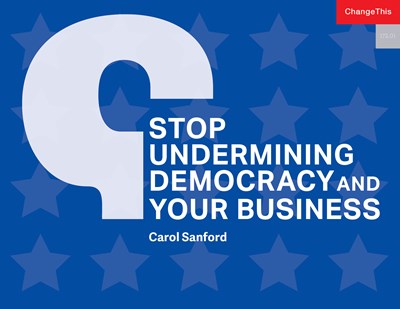
Blog / ChangeThis
Stop Undermining Democracy and Your Business
By Carol Sanford
"This is the fork in the road. Here, those who advocate external feedback as the solution to life’s problems take one path, based on the belief that people cannot develop the awareness needed for change. Those who have seen the unlimited potential of a developmental approach based on a holistic, living-systems view take another. This road is of a higher order, in that it is based on a belief that people have the capacity to be self-managing once they have learned to be self-observing and self-reflecting. But they need development to do so."
Categories: changethis
-
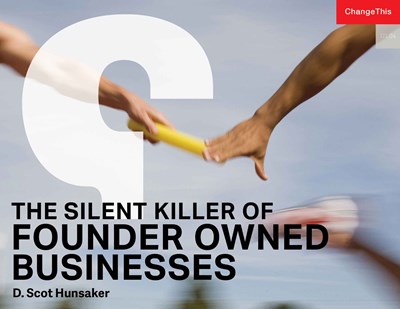
Blog / ChangeThis
The Silent Killer of Founder Owned Businesses
By D. Scot Hunsaker
"In the entrepreneurial world we have a silent killer. We don't talk about it very much, but it can put an end to a lifetime of hard work and planning. We owners take all of the risks and sometimes withering criticism and we start a business because we believe in what we and the business could accomplish in the world. Then, over time we build a thriving organization. It hums along, makes money, benefits everyone involved, meets customer demand, and helps the community grow and prosper. All good so far. But then we decide to make our exit, or the decision is made for us by health or family issues or other business interests. So, now what happens. Well, at least two thirds of the time, the business ceases operations, with all of the collateral damage that does. It happens because we never transition the company to the next generation of leaders, not because we don't know how, but because we never get around to it. As CEO's and entrepreneurs, perhaps we think it will never happen to us, that maybe we have discovered the fountain of youth.
Categories: changethis
-
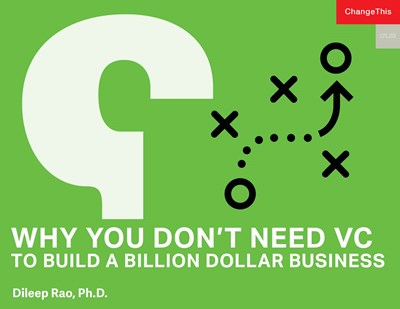
Blog / ChangeThis
Why You Don't Need VC to Build a Billion Dollar Business
By Dileep Rao Ph.D.
"Although the business press is filled with exploits of VC-funded ventures, the reality is that 94 percent of billion-dollar entrepreneurs took off without VC, and only about one in 10,000 entrepreneurs truly benefits from VC. Silicon Valley venture capital is like a very successful lottery. Yes, there is flash and dazzle and a few billionaires are created. But it is hit-or-miss, mostly miss. You would not recommend a career of buying lottery tickets to your children or pick it for yourself. Learn skills. Use smart strategies. You may succeed whether you win the VC lottery or don't For entrepreneurs who want to reduce the role of luck in their success and improve their odds, here are six reasons why you don't need VC to build a billion-dollar business."
Categories: changethis
-

Blog / ChangeThis
One Room, One Team, Different Purposes
By Carlos Valdes-Dapena
"We preach collaboration, talk and train teamwork, but all the while organizations are optimized to manage, foster and reward individual effort. I'm not the first person to notice or write about this. Nonetheless, most approaches to team effectiveness aren't designed to directly confront this organizational paradox: Collaboration is second- or third-nature for a large majority of us and this predisposes us to consistently revert to our more selfish ways, especially where we're rewarded and recognized to do so."
Categories: changethis
-
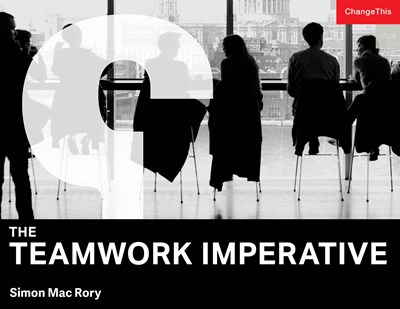
Blog / ChangeThis
The Teamwork Imperative
By Simon Mac Rory
"Teamwork is a (if not the) quintessential and critical element of organizational life. Over 90 percent of what we do in our work lives happens through collaborative effort. That makes teams and teamwork the most important means of output and productivity in the organization. I think most organizations and people would agree with this statement. So you would think that organizations would treat team performance as a strategic imperative, but most do not, preferring to muddle on with poorly performing teams and accepting mediocrity. There needs to be a big attitude change and it needs to be now. [. . . ] Only 10 percent of teams are high performing, a frightening 40 percent are dysfunctional and detrimental to members experiences and lives, leaving 50 percent which are performing—at best—with small incremental results. This is what most organizations accept. I consider this unacceptable, particularly when delivering high performing teams is not rocket science. But it does take effort, it does take strategy, it does take time, it does take budget and, critically, it takes persistence and commitment from the organization, leaders and team members.
Categories: changethis
-

Blog / ChangeThis
The Case Against a General AI in 2019
By Byron Reese
"Artificial General Intelligence (AGI) is either possible or it isn't. The chasm that divides the two viewpoints couldn't be wider because it has to do with our core beliefs about the nature of reality, the identity of the self, and the essence of being human. There is no real way to bridge the gap on the question of AGI between those with different views on these questions. But we can at least understand why the views are so different."
Categories: changethis
-
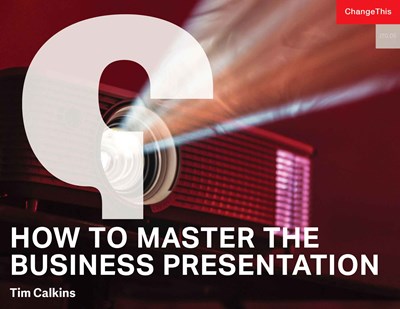
Blog / ChangeThis
How to Master the Business Presentation
By Tim Calkins
"The business world revolves around presentations. When it comes time to make a decision, people sit down to review the analysis, discuss the issues and reach agreement. Later, executives communicate the strategy to employees with presentations. When there are issues to wrestle with and bumps in the road, people create presentations. While emails and text messages are now ubiquitous, they rarely replace the presentation. It is hard to debate and discuss in depth in a text message. As a result, if you are going to be a successful business lead, you have to know how to create and deliver presentations that are tight, logical and convincing."
Categories: changethis

